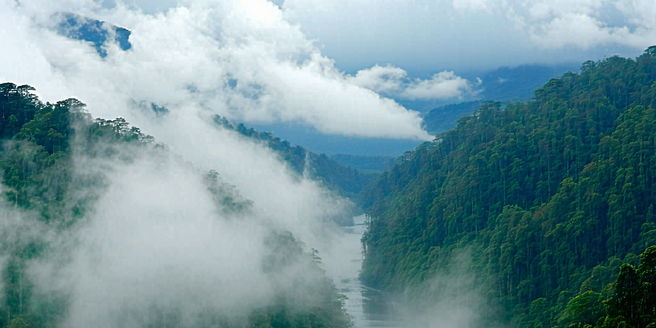
Understanding Cloud Formation Processes
Cloud formation is a complex process involving the condensation of water vapor in the atmosphere. This begins with the evaporation of water from the Earth’s surface, rising into the atmosphere and cooling as it ascends. As air cools, it reaches a saturation point where it can no longer hold its water vapor, leading to condensation into tiny droplets that form clouds. This process is influenced by various factors, including temperature, air pressure, and humidity levels. Clouds are essential in regulating the Earth’s climate by reflecting sunlight and trapping heat, playing a critical role in the Earth’s weather systems and ecosystems.
The Role of Water Vapor in Cloud Development
Water vapor is a crucial component in the formation of clouds, acting as the primary source of moisture and energy. As it evaporates from Earth’s surface, it begins to rise and cool, eventually condensing into droplets when the right atmospheric conditions are met. This transformation from vapor to liquid is fundamental to cloud formation and occurs when air reaches its dew point. Furthermore, water vapor contributes to the greenhouse effect, absorbing and retaining heat within the atmosphere, which influences weather patterns. Proper understanding of water vapor dynamics is essential for accurate weather forecasting and climate study.
Volcanic Ash: Composition and Characteristics
Volcanic ash consists of tiny particles of pulverized rock, minerals, and volcanic glass created during explosive eruptions. Its fine-grained texture allows it to travel substantial distances from the eruption site, impacting air quality and climates far from its origin. Each ash particle is characterized by its angular shape and mineral content, which can vary depending on the volcano’s particular geology. The ash can cause severe damage to aircraft engines, buildings, and water systems. Studying its composition helps scientists understand eruption dynamics, hazard mitigation, and environmental impact, making it a vital area of volcanological research.
Impact of Volcanic Eruptions on Cloud Patterns
Volcanic eruptions can significantly alter cloud patterns by injecting ash and gases, like sulfur dioxide, high into the atmosphere. These particles act as nuclei around which water droplets condense to form clouds, often leading to increased cloudiness and altered precipitation patterns. In addition, the ash and gases can generate vibrant sunsets and sunrises due to the scattering of sunlight. Sulfur dioxide can form sulfate aerosols that reflect sunlight, causing short-term cooling of the Earth’s surface. This cooling effect, coupled with changes in cloud cover, can affect weather and climate on regional and global scales. Understanding these impacts is crucial for predicting changes in weather following major volcanic events.
Interplay Between Volcanic Ash and Weather Systems
The dispersal of volcanic ash in the atmosphere can interact with and influence weather systems. Ash clouds can lead to reduced visibility and air travel disruption, while their presence in the stratosphere can alter atmospheric circulation patterns. These changes may influence wind direction and speed, affecting weather systems’ behavior over time. Moreover, such interactions can lead to cooler temperatures in affected regions, as sunlight is blocked by thick layers of ash. Additionally, volcanic ash can serve as nuclei for cloud droplet formation, potentially altering cloud cover and precipitation. Such interactions highlight the complex relationship between volcanic activity and meteorology, necessitating multidisciplinary research to improve predictive capabilities.
Long-Term Atmospheric Effects of Volcanic Ash Clouds
The long-term atmospheric effects of volcanic ash clouds include changes in climate patterns and impacts on air quality. Large-scale eruptions can inject ash and sulfur compounds into the stratosphere, where they can persist for years, reflecting sunlight and leading to surface cooling. This cooling effect, known as volcanic winter, has been linked to historical climate anomalies. Moreover, recent research indicates that even smaller eruptions can have cumulative impacts over time. Additionally, persistent ash presence in the atmosphere can degrade air quality, impacting human health and ecosystems. Understanding these prolonged effects is vital for assessing volcanic impacts on climate and developing strategies to mitigate their adverse consequences.
